Potrebujeme váš súhlas na využitie jednotlivých dát, aby sa vám okrem iného mohli ukazovať informácie týkajúce sa vašich záujmov. Súhlas udelíte kliknutím na tlačidlo „OK“.
ASTM D6612-00(2011)
Standard Test Method for Yarn Number and Yarn Number Variability Using Automated Tester
Automaticky preložený názov:
Štandardná skúšobná metóda pre priadze čísla a priadze Počet variability pomocou Automated Tester
NORMA vydaná dňa 1.5.2011
Informácie o norme:
Označenie normy: ASTM D6612-00(2011)
Poznámka: NEPLATNÁ
Dátum vydania normy: 1.5.2011
Kód tovaru: NS-35873
Počet strán: 4
Približná hmotnosť: 12 g (0.03 libier)
Krajina: Americká technická norma
Kategória: Technické normy ASTM
Kategórie - podobné normy:
Anotácia textu normy ASTM D6612-00(2011) :
Keywords:
linear density, variability, yarn, yarn, yarn number, Yarn properties, Automated procedures, Textile fabrics (general), Yarn number, ICS Number Code 59.080.20 (Yarns)
Doplňujúce informácie
| Significance and Use | ||||||||||||
|
Test Method D6612 for yarn number and yarn number variability is satisfactory for acceptance of commercial shipments and is used in the trade. If there are differences of practical significance between the reported test results for two or more laboratories, comparative tests should be performed by those laboratories to determine if there is a statistical bias between them, using competent statistical assistance. As a minimum, samples used for each comparative tests should be as homogeneous as possible, drawn from the same lot of material as the samples that results in disparate results during initial testing, and randomly assigned in equal numbers to each laboratory. Other fabrics with established tests values are used for this purpose. The test results from the laboratories involved should be compared appropriate statistical analysis and a probability level chosen by the two parties before testing begins, at a probability level chosen prior to the testing series. If a bias is found, either its cause must be found and corrected, or future test results adjusted in consideration of the known bias. The average results from the two laboratories should be compared using appropriate statistical analysis and a probability level chosen by the two parties before the testing is begun. If a bias is found, either its cause must be found and corrected or the purchaser and the supplier must agree to interpret future test results with consideration to the known bias. Test Method D6612 also is used for the quality control of filament yarns. Indices of Variability: Coefficient of Variation—%CV is a standard statistical calculation and is the most common index of yarn unevenness. For most textile applications in the 80–330 dtex (70–300 denier) range, a 1.0–1.3 %CV is adequate. %CV of yarns coarser than 666 dtex (600 denier) is not routine and usually not meaningful. %CV is less discriminating that %DS. Bad/Good Test—%BGT, which will normally be up to 20 % greater than %DS value, emphasizes the greatest spread in the entire length tested, (%DS is an average). If the value is greater than 50 % of the %DS, it suggests that there is a process that needs to be investigated. Density Spread—%DS is equivalent to the Uster % unevenness (Test Method D1425) and is an indication of short-term variability. Yarns with extreme values are more likely to cause trouble in subsequent yarn processes, which makes this perhaps the most useful index. The minimum achievable and maximum tolerance spread for a yarn product will depend on the yarn manufacturing process and end use. A spread of 3–4 % generally is, for most textile applications, in the range of 160–550 dtex (150 to 500 deniers). More critical applications, such as those using finer yarns, may require lower values. Density Frequency Variability—DFV is an index of spacing variability, whereas the others are indices of magnitude or unevenness. Frequency variability can induce resonance in high-speed processing and is a common source of barre, dye streaks, or patterned unevenness in fabrics. |
||||||||||||
| 1. Scope | ||||||||||||
|
1.1 This test method covers the measurement of yarn number up to 4000 dtex (3600 denier) and related variability properties of filament and spun yarns using an automated tester with capability for measuring mass variability characteristics. 1.2 Yarn number variability properties include percent density spread (%DS), coefficient of variation (%CV), density frequency variation. Note 1—For determination of yarn number by use of reel and balance, refer to Test Method D1907. For another method of measuring variability (unevenness) in yarn, refer to Test Method D1425. 1.3 The values stated in either SI units or inch-pound units are to be regarded separately as standard. Within the text, the inch-pound units are in parentheses. The values stated in each system are not exact equivalents; therefore, each system shall be used independently of the other. Combining values from the two systems may result in inaccuracies of results. 1.4 This standard does not purport to address all of the safety concerns, if any, associated with its use. It is the responsibility of the user of this standard to establish appropriate safety and health practices and determine the applicability of regulatory limitations prior to use. |
||||||||||||
| 2. Referenced Documents | ||||||||||||
|
Podobné normy:
Historická
1.2.2012
Historická
1.7.2012
Historická
1.7.2012
Historická
1.7.2012
Historická
1.7.2013
Historická
1.7.2013
Odporúčame:
EviZak - všetky zákony vrátane ich evidencie na jednom mieste
Poskytovanie aktuálnych informácií o legislatívnych predpisoch vyhlásených v Zbierke zákonov od roku 1945.
Aktualizácia 2x v mesiaci !
Chcete vedieť viac informácii ? Pozrite sa na túto stránku.


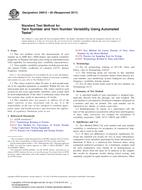
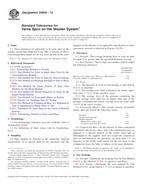 ASTM D2644-12
ASTM D2644-12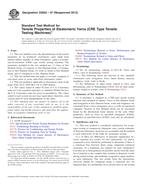 ASTM D2653-07(2012)..
ASTM D2653-07(2012)..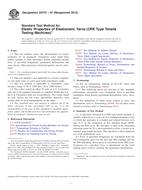 ASTM D2731-07(2012)..
ASTM D2731-07(2012)..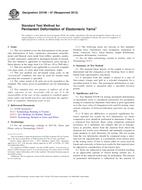 ASTM D3106-07(2012)..
ASTM D3106-07(2012)..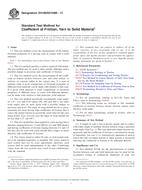 ASTM D3108/D3108M-13..
ASTM D3108/D3108M-13..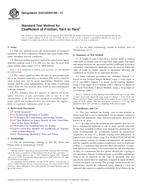 ASTM D3412/D3412M-13..
ASTM D3412/D3412M-13..
 Cookies
Cookies
